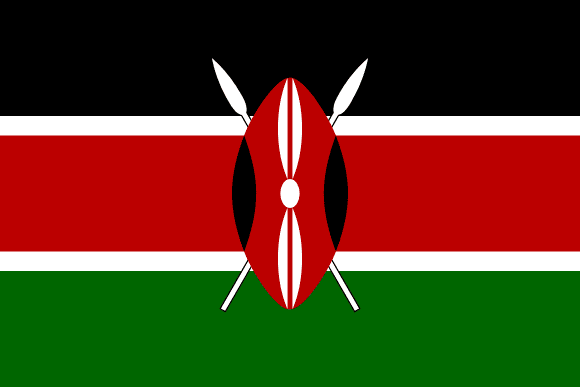
The Diploma in Environment, Health, and Safety (DEHS) program provides professionals with essential knowledge and practical skills in workplace safety, environmental protection, and accident prevention.
Days
Hours
Minutes
Seconds
The Diploma in Environment, Health, and Safety (DEHS) program is designed to equip professionals with comprehensive knowledge and practical skills in managing workplace health and safety, environmental protection, and accident prevention. In today's highly regulated business environment, understanding the principles of occupational health and safety, environmental management, and hazard control is essential for creating a safe and compliant workplace.
This program covers critical areas such as workplace safety, environmental management, hazard communication, accident management, and occupational disease prevention. Participants will learn how to identify, assess, and mitigate risks; establish a strong safety culture; and ensure compliance with local and international health and safety regulations, including ISO 45001 and OSHA standards.
Through a combination of theoretical insights, real-world case studies, and hands-on exercises, participants will develop the expertise needed to enhance safety performance, improve employee well-being, and protect the environment.
By the end of this program, participants will be able to:
Units & Modules:
U-1: Introduction to HSE
M-1: Introduction & Significance of Health & Safety
M-2: Organizational Safety Culture
M-3: Role, Responsibility & Competencies of Safety Professional
M-4: Environmental Management and Pollution Control
U-2: Workplace Safety
M-5: Transport Safety Hazards, Controls and Risk analysis
M-6: Fire Safety Hazards, Controls and Risk analysis
M-7: Occupational hygiene, ergonomics, safety and risk management
M-8: Electrical Safety Hazards, Controls and Risk analysis
U-3: Hazard Communication & Industrial Hygiene
M-09: Introduction to Hazard Communication (HAZCOM)
M-10: Understanding Chemical Hazards & Its Safety
M-11: Safety Data Sheets (SDS)
M-12: Types of Hazards
U-4: Safety Management
M-13: Behavior-based safety management
M-14: Health & Safety KPIs
M-15: Safety and Health Regulations; global & local perspective
M-16: Introduction to ISO 45001 & OSHA
U-5: Accident Management
M-17: Introduction to Accident Management
M-18: Root Cause Analysis & Countermeasures
M-19: Emergency Response Mechanism
M-20: Documentation & Accident Investigation
U-6: Occupational Diseases & its Prevention
M-21: Introduction to occupational diseases
M-22: Occupational Disease Symptoms, Causes & Prevention
M-23: Occupational Injury & its prevention
M-24: Communicable Diseases and its Management
Upon completing the program, participants will be able to:

This program is Validated and Quality Assured by ProfQual - UK. [www.profqual.org.uk]
Features:
Duration: 6 Months
Class: 24 Classes
Class schedule: Saturday 02:00 PM - 04:30 PM GMT
Short Video Material: Available
Mode of Learning: Virtual Class (Via Zoom)
Exam Method:
Number of Exams: 06 (Each unit has One Exam)
Assignment:
Name: James Mwangi
Designation: Safety Manager
Country: Kenya
"This course provided me with a structured approach to improving health and safety culture in my organization."
Name: Abigail Mensah
Designation: Environmental Health Officer
Country: Ghana
"The environmental protection and pollution control module helped me create better sustainability strategies."
Name: David Banda
Designation: HSE Consultant
Country: South Africa
"Learning how to identify and control hazards improved my ability to keep employees safe."
Name: Sarah Okeke
Designation: Risk Manager
Country: Nigeria
"The root cause analysis and accident investigation training improved our safety protocols."
Name: Joseph Kamau
Designation: Operations Manager
Country: Tanzania
"The focus on safety KPIs and regulatory compliance helped me improve overall safety performance."
Health and Safety Risk Management
Ability to identify, assess, and mitigate workplace hazards and risks.
Regulatory Compliance
Proficiency in understanding and applying health and safety regulations.
Emergency Response and Accident Investigation
Skill in managing workplace emergencies and conducting accident investigations.
Occupational Health and Hygiene
Expertise in managing occupational health issues and preventing diseases.
Hazard Communication
Competence in effectively communicating safety information to employees.
Environmental Protection
Skill in implementing environmental management and pollution control measures.
Safety Leadership and Culture
Ability to establish and maintain a strong safety culture.
Performance Monitoring and Improvement
Skill in using safety KPIs to track and improve safety performance.
| Enrollment Closes | 12/Jul/2025 GMT |
| Length | 6 Months |
| Live Chat | Enabled |
| Regular Fee | $ 560.00 |
| Special Fee | $ 420.00 |
Chat with us on WhatsApp
 UK Registered Office
UK Registered Office
 UK Operational Office
UK Operational Office
 Bangladesh Contact Office
Bangladesh Contact Office
 Malaysia Contact Office
Malaysia Contact Office
 Ghana (Accra) Contact Office
Ghana (Accra) Contact Office
 Ghana (Eastern Region) Contact Office
Ghana (Eastern Region) Contact Office
 Tanzania Contact Office
Tanzania Contact Office
 Uganda Contact Office
Uganda Contact Office
 Nigeria Contact Office
Nigeria Contact Office
 Kenya Contact office
Kenya Contact office